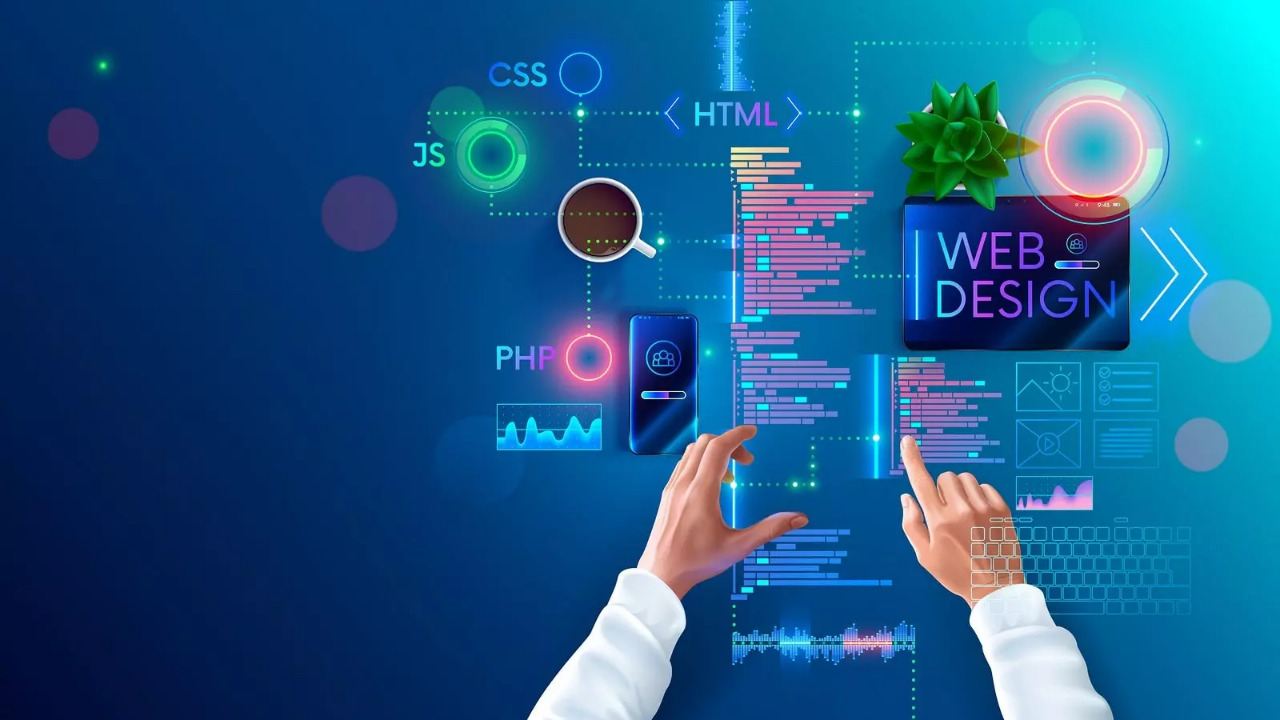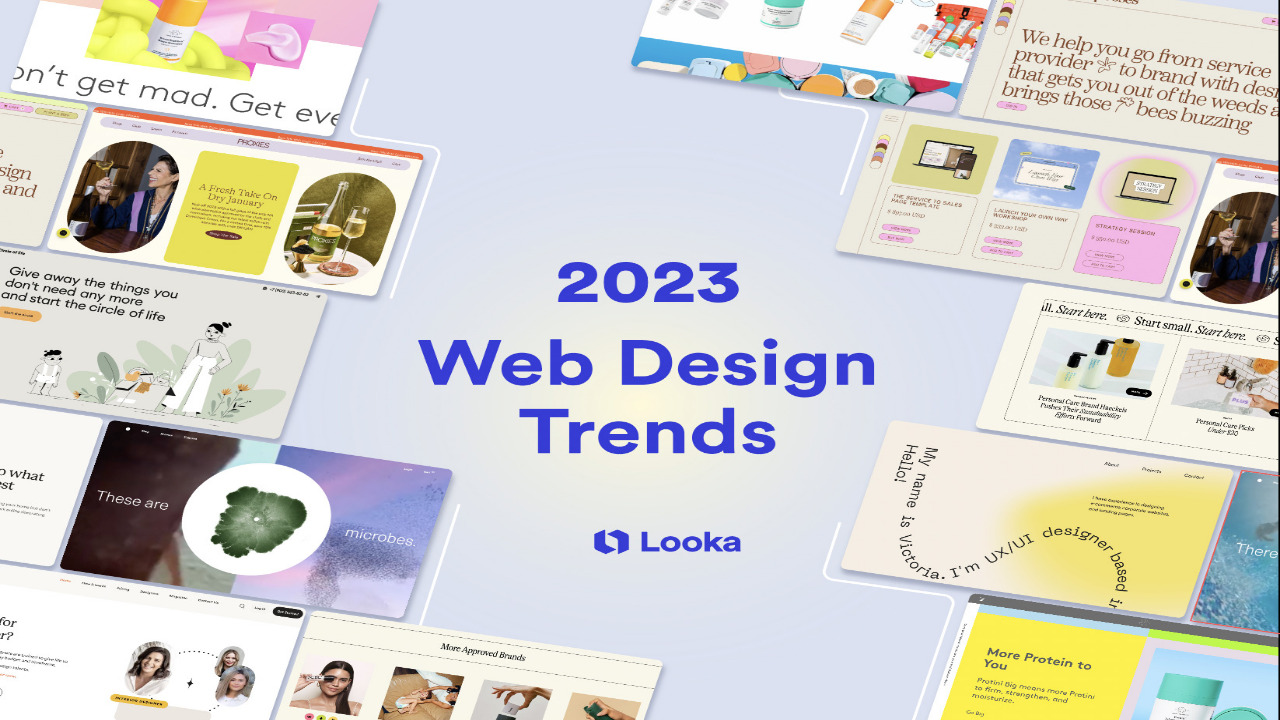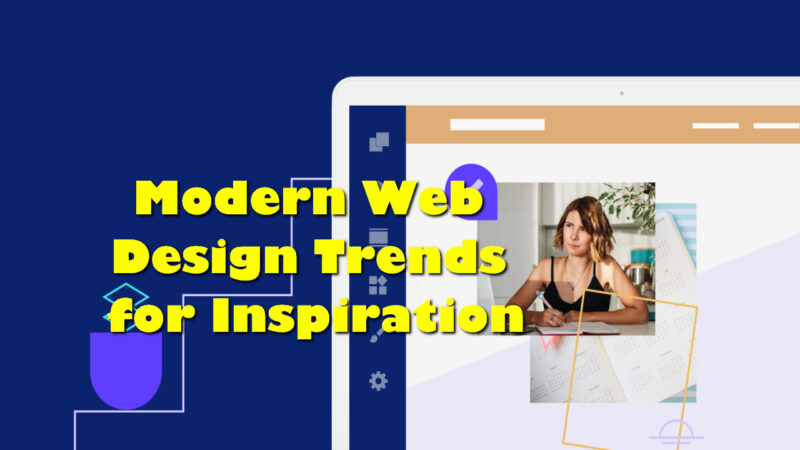Web design is constantly evolving. New trends emerge every year and it can be hard to keep up. That’s why we’ve compiled a list of the hottest web design trends for 2020. From dark mode to 3D rendering, these trends will help you create a modern, stylish website that’s sure to impress your visitors.
Modern web design trends are constantly evolving.

The modern web design trends are constantly evolving. With the advancement of technology, the way web design trends are created and used is also changing. This is a good thing for the industry as it keeps the web design field fresh and exciting. However, it can be difficult to keep up with all the changes. Here are some of the latest web design trends:
1. Minimalism
Minimalism is a popular web design trend because it keeps things clean and simple. This makes it easy for users to navigate and find what they are looking for.
2. Flat Design
Flat design is another popular trend because it gives websites a clean and modern look. This type of design is also easy to use and navigate.
3. Responsive Design
Responsive design is important because it ensures that your website looks good on all devices. This is important because more and more people are using their mobile devices to browse the internet.
4. Material Design
Material design is a newer trend that is becoming more popular. This type of design uses shadows and layers to give websites a more three-dimensional look.
5. Parallax Scrolling
Parallax scrolling is a popular trend because it creates an interesting and engaging user experience. This type of scrolling creates a sense of depth and movement as you scroll down the page.
6. Typography
Typography is important because it can help to set the tone and style of your website. This trend is all about choosing the right fonts and using them in an interesting way.
7. Animation
Animation is a popular trend because it can add interest and personality to your website. This is
However, some trends are more popular than others.

Although certain trends are more popular than others, it is important to remember that personal preference should ultimately dictate which trends are followed. There is no point in following a trend simply because it is popular if it does not suit one’s individual taste. It is also important to be aware that trends come and go, so there is no need to invest a lot of money in keeping up with them. Instead, it is often better to wait until a trend has passed before investing in it.
Here are some modern web design trends for inspiration:

There is no shortage of web design trends to draw inspiration from these days. But with so many options out there, it can be tough to know where to start.
Here are a few modern web design trends that are sure to get your creative juices flowing:
1. Minimalism
With the increasing popularity of flat design, it’s no surprise that minimalism is one of the hottest web design trends around. Less is definitely more when it comes to this clean and stylish aesthetic.
2. Material Design
Google’s material design language is taking the web by storm. This trend is all about using simple, clean lines and bold colours to create an eye-catching and user-friendly interface.
3.Responsive Design
With more and more people using mobile devices to access the web, responsive design is more important than ever. This trend focuses on creating websites that look great and work well on any device, no matter the size.
4. Storytelling
A well-told story can be a powerful tool for any website. This trend focuses on using engaging content and visual elements to create an immersive experience that will keep users coming back for more.
5. Interactive Elements
Interactive elements are a great way to add some fun and flair to your website. This trend can include anything from gamification to 360-degree images and videos.
No matter what trends you decide to follow, the most important thing is to create a website that is visually appealing and easy to use.
Minimalism
Minimalism has been a popular movement in the design world for many years now. It is a style that is characterized by clean lines, simple shapes, and a focus on function over form. In recent years, minimalism has been making a comeback in the world of fashion as well. More and more people are embracing the minimalist aesthetic when it comes to their wardrobe.
There are many benefits to dressing in a more minimalistic way. For one, it can save you a lot of time and effort in the morning. When you have a closet full of clothes, it can be hard to decide what to wear. But when you only have a few pieces to choose from, it becomes much easier.
Another benefit of minimalism is that it can help you save money. If you only buy a few pieces of clothing that you really love, you won’t need to keep buying new clothes all the time. This is especially helpful if you are on a budget.
Finally, dressing in a more minimalistic way can help you feel more confident and put-together. When you are wearing clothes that you feel good in, it shows. You will be more likely to stand up straight and make eye contact with people. You will also be less likely to fidget or feel self-conscious.
If you are interested in exploring the world of minimalism, there are a few things you can do. First, take a look at your wardrobe and see if there are any pieces that you can get rid of. Second, start shopping for clothes that are more simple and classic in style. And third, experiment with different ways of styling your hair and makeup.
Minimalism is a great way to
Mobile-First Design
What is mobile-first design?
Mobile-first design is a web development approach that prioritizes mobile devices when creating a website. This means that your website will be designed for mobile devices first, and then scaled up to larger screens.
Why is mobile-first design important?
Mobile-first design is important because it ensures that your website will be accessible to the largest number of people. With more people using mobile devices to access the internet, it’s important to make sure that your website can be accessed on all devices.
How do I create a mobile-first design?
There are a few things to keep in mind when creating a mobile-first design:
1. Simplicity is key. When designing for mobile devices, it’s important to keep things simple. This means using large, easy-to-read text and menus that are easy to navigate.
2. Use responsive design. Responsive design is a web development approach that makes websites automatically adjust to the screen size of the device. This is important because it ensures that your website will look good on all devices, from phones to tablets to desktops.
3. Prioritize content. When designing your website, think about what content is most important and make sure that it is easily accessible on mobile devices. This might mean putting important content above the fold or making sure that it can be accessed through menus.
4. Optimize images. Images can be a major problem on mobile devices, so it’s important to optimize them for mobile. This means using smaller images that will load quickly on mobile devices.
5. Test,
Material Design
Material design is a design language developed in 2014 by Google. It is a set of principles that aim to create a consistent, intuitive, and visually appealing user interface across all platforms and devices.
The main goals of material design are to:
– Create a consistent user experience across all devices and platforms
– Use intuitive and predictable patterns
– Use real-world metaphors
– Stay up-to-date with the latest technological developments
Material design has been widely adopted since its launch, and can be seen in many popular apps and websites such as Google Docs, Gmail, and Inbox.
Flat Design
Flat design is a minimalistic design approach that emphasizes simplicity and usability.
Flat design is often used in interface design, and has been gaining popularity in web design as well.
Flat design eschews the use of traditional 3D elements and gradients, instead opting for a more 2D look.
Flat design has been praised for its clean and minimalistic aesthetic, and has been used by some of the largest companies in the world, such as Google, Microsoft, and Apple.
While flat design has its detractors, there is no denying that it is a popular design trend that is here to stay.
Typography-Focused Design
Typography is one of the most important aspects of design, yet it is often overlooked. A well-designed website should be easy to read and easy on the eyes. The right font can make a big difference in the overall look and feel of your site.
There are many different ways to approach typography in web design. Some designers focus on choosing the right font for their site, while others focus on using the right font size and line height. There are also those who focus on increasing the contrast between the background and the text.
Whatever approach you take, remember that the goal is to create a website that is easy to read and easy on the eyes. The right typography can make a big difference in the overall look and feel of your site.
Ghost Buttons
A ghost button is a button that has no visible border or background color. They are usually transparent, with the text and icon being the only visible element.
Ghost buttons are often used in web design as a way to create a more minimalist aesthetic. They can also be used to create a sense of depth and hierarchy on a page, as well as to draw attention to a particular element.
Ghost buttons can be a great way to add some visual interest to a page without being too overbearing. However, because they are so minimal, it is important to make sure that they are used in a way that is still easy to understand and use. Otherwise, they may just end up looking like a mistake.
Card-Based Design
Designers are always on the lookout for new ways to engage users. Card-based design is one of the latest trends in web design. So, what is card-based design?
Card-based design is a layout style that groups content into cards. Cards are a flexible and popular format for displaying content on the web. They can be used to display a variety of content types, such as articles, products, photos, and more.
Card-based design is a great way to organize content in a way that is both visually appealing and easy to use. Cards can be customized to fit the specific needs of your website or app. And, they can be rearranged to create different layouts.
If you’re looking for a new way to design your website or app, card-based design is definitely worth considering.
